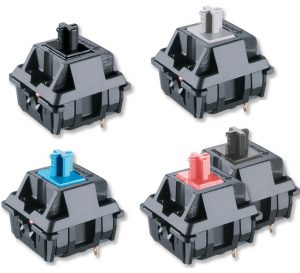Comprehending the Functionality of Membrane Changes for Customer Interface Devices
The functionality of membrane switches over stands for a substantial advancement in customer interface design, combining performance with aesthetic flexibility. These buttons operate through a multi-layered framework that converts customer communications right into electric signals, permitting both portable layouts and strength against environmental aspects. As industries increasingly focus on individual experience, understanding the subtleties of membrane button innovation comes to be essential. What ramifications do these advancements hold for future applications, and just how might they redefine user interactions across different gadgets?
What Are Membrane Buttons?
Membrane switches are cutting-edge interface gadgets that assist in user interaction with digital tools. These functional elements contain numerous layers, consisting of a graphic overlay, spacer, and a printed circuit layer. The layout permits a smooth combination right into various digital gadgets, improving both the visual and practical aspects of customer interfaces.
Membrane layer switches are generally utilized in a wide variety of applications, from home appliances to commercial equipment and clinical gadgets. Their building and construction commonly features a thin account, making them an excellent option for compact designs. The responsive comments provided by these buttons can be crafted to meet certain user preferences, making sure efficient communication in between the individual and the gadget.
Resilience is another significant advantage of membrane switches, as they are immune to dust, moisture, and chemicals, which enhances their lifespan sought after atmospheres. Furthermore, these buttons can be personalized in terms of shape, size, and visuals design, permitting branding and user-specific functions. Overall, membrane changes represent a sensible solution for improving user experience in electronic gadgets, integrating performance with visual appeal in a reliable manner.
Just How Membrane Switches Job
Operating on a straightforward principle, membrane layer changes make use of a layered building and construction to register user input successfully. Each switch contains multiple layers, consisting of a published circuit layer, a spacer layer, and a top graphic layer, which are designed to work together seamlessly. When an individual presses the top layer, it compresses the spacer layer, bringing the conductive aspects of the circuit layer into call with each various other.
This contact creates a shut circuit, signifying the tool to carry out a certain function. The design permits for different setups, including tactile feedback, which can improve the user experience by giving a physical sensation upon activation. The materials utilized in membrane switches frequently include adaptable substrates, such as polyester or polycarbonate, which ensure durability and resilience versus damage.

Secret Advantages of Membrane Buttons

An additional substantial benefit is their compactness. Membrane layer buttons are slim and lightweight, which makes it possible for makers to save room in their gadgets without sacrificing capability. This function is especially beneficial in applications where weight and quantity are important considerations.
In addition, membrane switches are immune to dirt, dampness, and chemicals, enhancing their sturdiness. This strength prolongs their lifespan and decreases the requirement for regular replacements, causing cost financial savings gradually.
Additionally, the tactile responses click here for info given by membrane buttons can be enhanced to enhance individual communication. They can consist of attributes such as raised switches or audible clicks, boosting functionality and user experience.
Applications Across Industries
Interface devices making use of membrane switches are widespread in a large range of markets, showcasing their versatility and functionality. Membrane Switch. In the clinical industry, membrane buttons are essential to devices such as diagnostic equipment and client tracking systems, where their toughness and ease of cleansing are essential for maintaining health criteria. Similarly, in the vehicle industry, these switches are employed in dashboard controls and infotainment systems, offering a smooth and modern user interface for users.
In addition, the consumer electronics market benefits from membrane buttons in home appliances and portable gadgets, where small design and straightforward user interfaces boost customer experience. Industrial applications additionally utilize membrane switches for control panels in equipment and automation systems, emphasizing their robustness and resistance to rough atmospheres.
In the aerospace and defense industries, membrane layer switches are made use of in cockpit controls and equipment, where dependability and performance under extreme conditions are extremely important. Furthermore, the gaming market progressively includes membrane layer buttons in controllers and arcade machines, adding to an appealing individual experience. Generally, the convenience of membrane layer switches over allows their widespread usage across countless markets, underscoring their relevance in modern user interface design.
Future Trends in Membrane Change Technology

Additionally, the usage of advanced materials, such as polycarbonate and polyester movies, is expected to climb, offering enhanced toughness and resistance to ecological stress factors. These products add to the general long life of membrane buttons, making them suitable for harsher industrial applications.
Furthermore, the learn the facts here now incorporation of smart technology, including IoT connection, will certainly make it possible for membrane layer buttons to communicate with various other tools and systems, helping with an extra interactive customer experience. This fad lines basics up with the expanding need for clever tools throughout different fields, from healthcare to customer electronic devices.
Lastly, personalization choices are expected to broaden, allowing makers to create bespoke solutions tailored to certain customer needs and choices. These developments will certainly place membrane layer buttons as necessary parts in the advancement of interface innovation.
Conclusion
In conclusion, membrane switches over represent an essential development in individual interface innovation, supplying a reliable and versatile solution for varied electronic applications. As developments in product science and touch noticing modern technologies proceed, the performance and applicability of membrane buttons are expected to increase, strengthening their importance in contemporary digital tools.
Comments on “Vital Features to Try To Find When Picking a Membrane Switch”